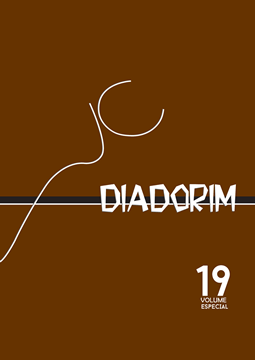Passivep and The Distinction Between Eventive, Resultative, and Statitive Passives 1¨
DOI :
https://doi.org/10.35520/diadorim.2017.v19n0a13513Résumé
Tis paper focuses the distinction between verbal and adjectival passive sentences. For that differentiation to be accounted for, a previous proposal considering a specifc functional node for eventive passives - passiveP (LIMA JÚNIOR; AUGUSTO, 2015) is retrieved. It is arguably assumed that the approach based on passiveP, besides maintaining a uniform analysis to active and passive sentences (as VoiceP in Collins (2005)), deals well with intervention issues, and is prosperous in addressing parametric variation and language acquisition facts. As far as the tripartite distinction among the different types of passives is concerned (EMBICK, 2004; DUARTE; OLIVEIRA, 2010), it is proposed that a main bipartite distinction between eventive and adjectival passives may be retained, which is here attributed to the presence of passiveP. Concerning stative and resultative passives, an agreement operation between the auxiliary verbs and the participle (LUNGUINHO, 2011) is assumed to allow for different readings to be obtained. A fourth group of passive-like sentences, involving participles, which have lost their connection with their original verbs, is also syntactically distinguished and treated as actual copular constructions.Téléchargements
Téléchargements
Publiée
Numéro
Rubrique
Licence
Transferência de direitos autorais - Autorização para publicação
Caso o artigo submetido seja aprovado para publicação, já fica acordado que o autor autoriza a UFRJ a reproduzi-lo e publicá-lo na Diadorim: Revista de Estudos Linguísticos e Literários, entendendo-se os termos "reprodução" e "publicação" conforme definição respectivamente dos incisos VI e I do artigo 5° da Lei 9610/98. O artigo poderá ser acessado pela internet, a título gratuito, para consulta e reprodução de exemplar do artigo para uso próprio de quem a consulta. Essa autorização de publicação não tem limitação de tempo, ficando a UFRJ responsável pela manutenção da identificação do autor do artigo.

A Revista Diadorim utiliza uma Licença Creative Commons Atribuição-NãoComercial 4.0 Internacional (CC BY-NC 4.0).

